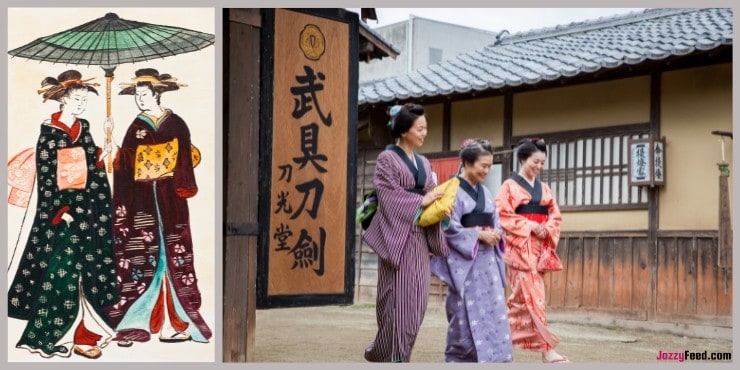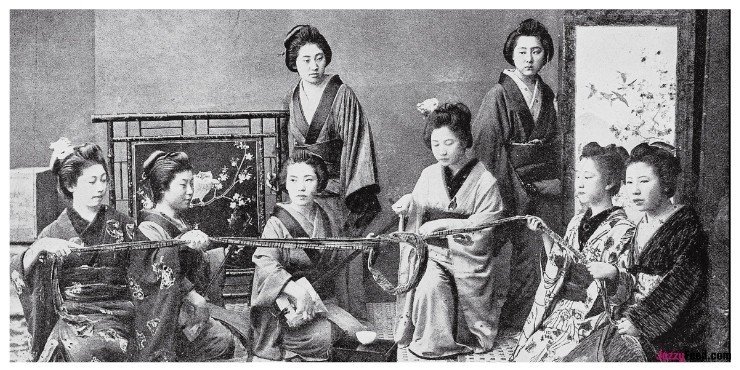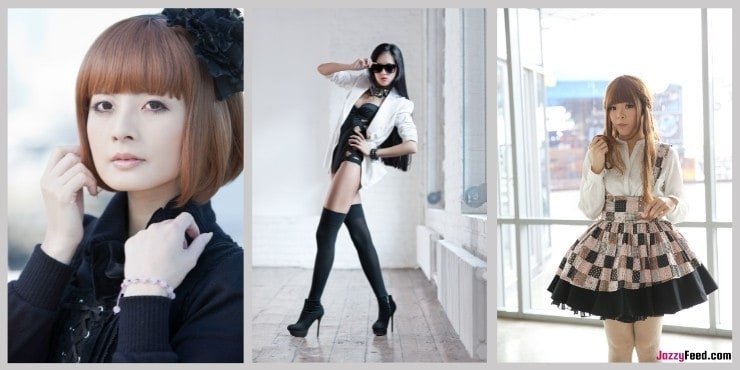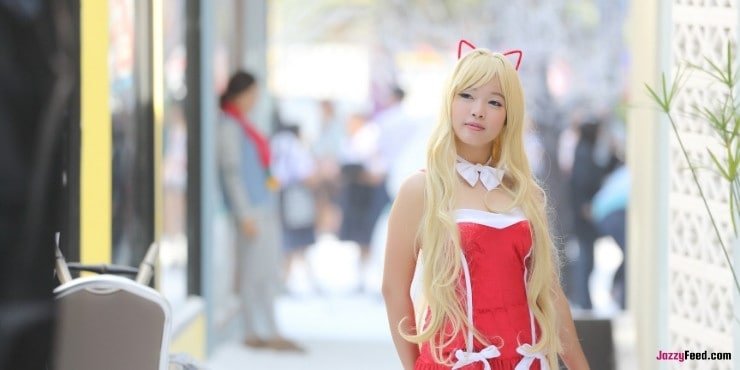When compared to other fashion styles around the world, Japanese fashion has a particular aesthetic that sets it apart. Overall, it looks wonderful, but really wearing Japanese fashion is extremely difficult. There are numerous moving pieces, as well as a brilliant array of colors and features. It’s all too simple to become overwhelmed. Learn more about the many Japanese dress styles and fashion styles to get a better understanding of these distinctive areas of fashion ideas.

There are hundreds of unique subcultures in Japanese fashion, ranging from the radically experimental to the relatively conservative. On the one hand, there’s the avant-garde, which includes Harajuku, Lolita, and anime-inspired fashion. Classic, timeless, and minimalist aesthetics, on the other hand, are represented by Muji and Uniqlo’s casual yet refined collections.
History of Japanese Clothing
Japan is known around the world for having its own unique fashion style that is unlike anything else on the planet. But how did Japan earn its reputation as a fashion powerhouse? It could be said to have started in the year 200. That was such a long time ago, and Rome was still an empire, whereas England was not. The majority of the world was unaware of the United States, and the Vikings had yet to reach Canada. Fashion, on the other hand, was blossoming in Japan.

In Japan, clay statues dating from this year or near to it have been uncovered. It’s because of the way they’re dressed that they stand out. They are extremely detailed and provide historians with a wealth of information about Japanese clothes during that time period.
Both male and female sculptures wear two-piece clothes with flared jackets and long, pleated skirts in female fashions. These figures, known as haniwa, can be found in Miyazzaki, Japan’s Haniwa Garden.
The most characteristic item in all Japanese fashion first appeared about the year 600. This is when the pao, a kimono-like garment, became extensively worn for the first time. For centuries to come, it would revolutionize the way all Japanese people dressed. The pao, the kimono’s forefather, was influenced by Chinese court wear at the time, particularly the fashions worn by upper-class nobles and royals.
Types of Japanese Dresses
Even within typical Japanese styles, there are a plethora of variants and designs that result in radically different aesthetics. Take a closer look at the most popular dress styles in Japan, and you’ll quickly be able to identify the many types of dresses, as well as when and how they’re worn, what they imply, and whether or not you can wear them yourself.
Furisode
The furisode is a long-sleeved kimono with a formal appearance. The furisode is typically made of high-quality silk and is brilliantly colored. These are extremely expensive gowns that are frequently worn at big social events by young women who are about to marry. Many parents hire furisode costumes as needed because this clothing is so expensive and yet so vital for a young woman’s social position. This appears to be a very stylish and expensive Japanese kimono.
Kimono
The kimono in Japan is one of the few clothes that have a strong connection to the country. In actuality, kimono is a Japanese word that means “clothing” or “a piece of clothing.” This is a centuries-old dress style that is still fashionable today.
Kimonos are dresses with a specific manner of wrapping and folding around the body. They’re designed in a robe-like style with a floor- or ankle-length length. Kimonos come in a wide range of colors and designs, with wide, voluminous sleeves. The kimono was traditionally closed with a separate cloth belt called an obi. Kimonos often have a cloth belt connected to the design in more recent styles.
Japan’s national costume is the kimono. The kimono’s different materials, colors, and patterns genuinely create a tale about the wearer’s history, social class, and heritage. This is a traditional gown that is frequently worn during important occasions and cultural events such as tea ceremonies.
Both men and women have worn the kimono as everyday clothing for ages. However, throughout the 1800s, Japan became more influenced by European and American fashion. The kimono is worn for ceremonial gatherings and rituals in modern Japan, but it is becoming less popular as streetwear. On a daily basis, the ordinary Japanese individual does not wear a kimono.
Silk kimonos are hand-sewn together in the traditional style. Always go left side over the right side when folding the kimono over your torso. Only when preparing the dead for burial or wearing a ceremonial kimono at a funeral may a kimono be folded in the opposite direction. On top of the kimono, a hakama is sometimes worn. This is a traditional Japanese garment consisting of a long, styled skirt that is usually worn only at special events.
Junihitoe
The Junihitoe is a complicated piece of clothing. The phrase literally translates to “12-layer robe,” which isn’t far off the mark. This garment’s inner layer is comprised of white silk or cotton. There are more layers to come. A coat is an outermost layer. A silk robe known as a kosode, a pleated skirt known as a hakama, a stiff robe known as an uchignihu, a waist-length jacket known as a karaginu, and a silk robe known as a uwai, as well as multiple uchigi, which are light, unlined robes that add extra layers, make up the layers of the junihitoe.
This is an extremely expensive garment, and it is also quite heavy, due to the layers and sophisticated design. Masako, Japan’s crown princess, wore one of these gowns to her wedding. In 1990, Empress Michiko wore one to a coronation-like ceremony for Emperor Akihito. This outfit was first worn by women in the Japanese court around the year 900. This outfit is reserved for the most formal events and is normally only worn by the wealthiest royals and nobility.
Nemaki
Nemaki dresses are cotton kimono that are usually used in spas and resorts. The majority of these robe-like clothes are blue or white in hue. They are frequently embellished with characteristics that are more commonly associated with Western apparel, such as little pockets.
Shiromuku
In Japan, the shiromuku is the most traditional kimono wedding gown. It’s a fully white kimono with at least two layers and a white belt around the waist. A white head covering and white shoes are also worn by the bride. The shiromuku is decorated in exquisite beadwork and embroidery and is composed of costly fabric, generally silk or satin.
The irouchikake, a modern variation of the skiromuku, is an unbelted, padded robe-like dress with a train. This outfit, unlike the conventional shiromuku, comes in a range of colors. It’s also manufactured from a variety of materials.
Uchikake
The uchikake is a white kimono with several stitches that is worn by the bride at a Japanese wedding. The groom is dressed in a black kimono for males. The uchikake is a robe that is exceptionally long. Unlike Western wedding gowns, which have a train in the back, this Japanese wedding gown has a train all the way around the skirt. In fact, bridesmaids assist the bride in lifting her gown as needed throughout the day.
Yukata
In Japan, both men and women wear the yukata. It’s a cotton akimono with stenciled motifs on the front. This garment was originally exclusively worn after a bath. However, because lightweight cotton is easy to wear in the heat, it became famous as Japanese streetwear in the summer months. This kind of kimono is preferred by many Japanese women over more traditional Japanese apparel because it is easy to maintain and wear.
Japanese Fashion
Japan is the only country that can boast such a wide range of fashion trends. There is a Japanese-based aesthetic for everyone, from preppy styles inspired by American students to Gyaru’s girly-glam style. Yohji Yamamoto (Y3), Rei Kuwakubo (Commes de Garçons), and Kenzo Takada are among the most successful fashion designers in the world, thanks to their rich fashion culture.
Author Kensuke Ishizu, in addition to well-known fashion designers such as Yoho Yamamoto and Rei Kawakubo, has had a significant impact on Japanese fashion. He is renowned for introducing ivy league fashion to Japan and dramatically revolutionizing the fashion industry. Because Japanese street fashion is so distinct and ever-changing, it has become a source of fascination for style observers and fashionistas all over the world.

Japanese fashion is known all around the world for being cutting-edge, bright, and even quirky. Japanese fashion is unique in appearance, and there are various distinct style types linked with Japanese fashion.

Many of these fashion types are collectively referred to as Harajuku style or street style. This simply refers to any form of fashion appearance that is often worn by young and stylish people in Japan’s major cities, particularly in Tokyo. Bold aesthetics, such as eye-catching graphics and brilliant colors, are typical of Japanese street style. Various Harajuku fashion looks are generally characterized by over-the-top cosmetics and/or accessories. The name is derived from a Tokyo neighborhood.
Sweet Lolita
Babydoll dresses are a popular component of the sweet Lolita fashion style. Pastel and soft colors, as well as a lot of frills and embellishments, define this look. The charming Lolita aesthetic is defined by lace, ribbons, bows, and flowers. It’s a frilly-laden appearance that’s ultra-feminine and youth-oriented. Pink is a color that is frequently used. Pinks and pastels are replaced with black, red, and Victorian-inspired ensembles with loads of lace and ruffles in gothic Lolita style.

Kawaii
The concept of Kawaii – which means cute in Japanese – evolved from cutesy handwriting to a global fashion hit, despite its origins as a form of resistance. Millions of people have been drawn to the Cult of Cute, which has developed to include the influence of subcultures such as Lolita.

Doll Kei
Dolly Kei outfits are composed of midi-length and longer dresses, which are usually made of velvet or other heavy materials and embellished with gold trim or a flowery pattern. Color blocking and graphic floral patterns help to catch the eye despite the fact that the colors are usually richer and darker in tone.

Kogal (School Girl)
In Japan, schoolgirl dress, known as kogal, is immensely popular. It entails grown ladies donning a uniform similar to that of a Japanese school. Miniskirts, Burberry scarves, and loose stockings are all classics in this Japanese fashion trend, which is often coupled with platform boots and colored hair for added edge.

Minimalist
Not all Japanese clothes are as bright and flamboyant as the ones shown here. Indeed, Japanese giant fashion businesses like Uniqlo and Muji have created a global obsession with simple and minimalist clothing. These brands cater to men’s, women’s, and children’s fashion.
Some argue that these corporations are eroding Japan’s sense of street fashion, while others argue that they are only enhancing the country’s fashion identity.

Visual Kei
The visual kei look is a gothic fashion trend with a lot of dark colors that are highly stylized. This is a style that has moved well beyond Japanese culture and onto the rest of the world. In keeping with the gothic appearance, dresses linked with this trend are often long maxi designs and fit and flare or A-line dresses with fitted, lace-up bodices.

FAQs
It’s true that Japanese fashion is complicated! If you still have a lot of questions, you’re like the rest of us who didn’t grow up wearing these clothes and laying in Japanese style. Find out the answers to the most frequently asked questions about Japanese fashion and learn everything you need to know to try on some of these looks for yourself.

What makes a kimono different from a yukata?
Although the kimono and yukata have a similar appearance, the yukata is constructed of cotton. They aren’t lined either. On the other hand, kimonos are virtually usually lined. The yukata is likewise made of a single piece of fabric, but the kimono is made up of several. Yakata are frequently worn without the nagajuban, the undergarment that is worn with a kimono, because they are machine washable. Kimono are frequently constructed of silk or other delicate fabrics that cannot be machine cleaned.
What do you wear under a kimono?
Many layers of clothes are worn beneath the kimono in traditional Japanese attire. The nagajuban is a robe composed of durable, machine-washable material. It’s worn such that the nagajuban’s edge is visible beneath the kimono. A datejime, or sash, is knotted around the nagajuban. You can also wear a hiyoku, which is a robe that goes under a kimono. This is worn as an additional layer of warmth on cold days and also in formal attire.
When do Japanese people wear traditional clothing?
In Japan, kimonos are no longer worn as everyday attire. In the late 1800s and early 1900s, they were out of style. They are, nevertheless, still worn at weddings, special events, and ceremonies. Wearing a kimono has become increasingly popular in recent years. The dress has recently been more popular in western fashion trend designs, resulting in a new surge in demand for this garment. They’re still worn for a variety of formal occasions.
When do people wear kimonos, and how do they put them on?
Graduation and coming-of-age ceremonies, as well as different summer festivals, still feature kimonos. At funerals, they are frequently dressed in all-black ensembles. At funerals, the mofuku, an all-black kimono with a family crest, is worn. During a tea ceremony, a simple kimono can be worn, but Western attire is also acceptable.
Kimonos are still worn with special undergarments in the traditional manner. The left side of the kimono is crossed over the right side when it is wrapped around the torso. Wearing it with the right side over the left is exceedingly unfortunate, as it represents death. Kimonos are traditionally fastened around the waist with an obi, which is a wide sash. A matching belt is already connected to the kimono in more recent styles, and it is simply fastened at the waist.
Why doesn’t Japanese fashion have a strong presence outside of the country?
The over-the-top fashion styles exhibited in Japanese streetwear are not widely seen outside of Japan. In Peru, for example, which is isolated from Japan on both sides by at least one ocean, you might have a hard time locating someone with sweet Lolita looks.
However, with the rise of globalization, Japanese fashion looks and specific designs are more easily than ever making their way around the world and influencing fashion culture all over the world.

